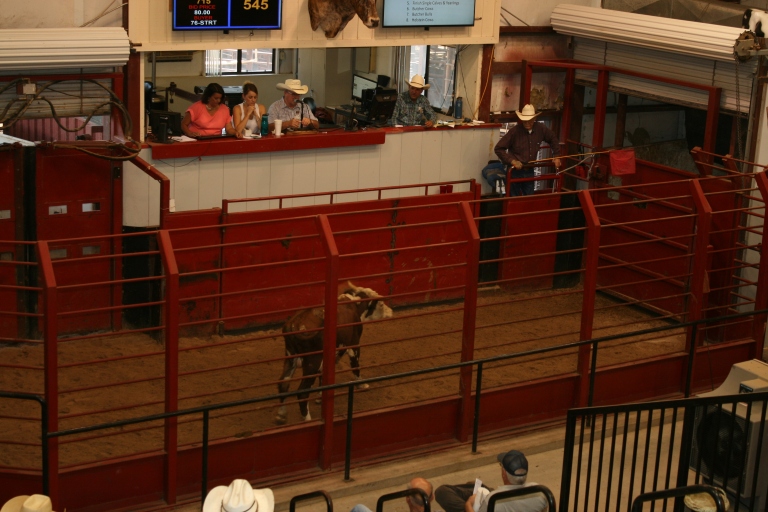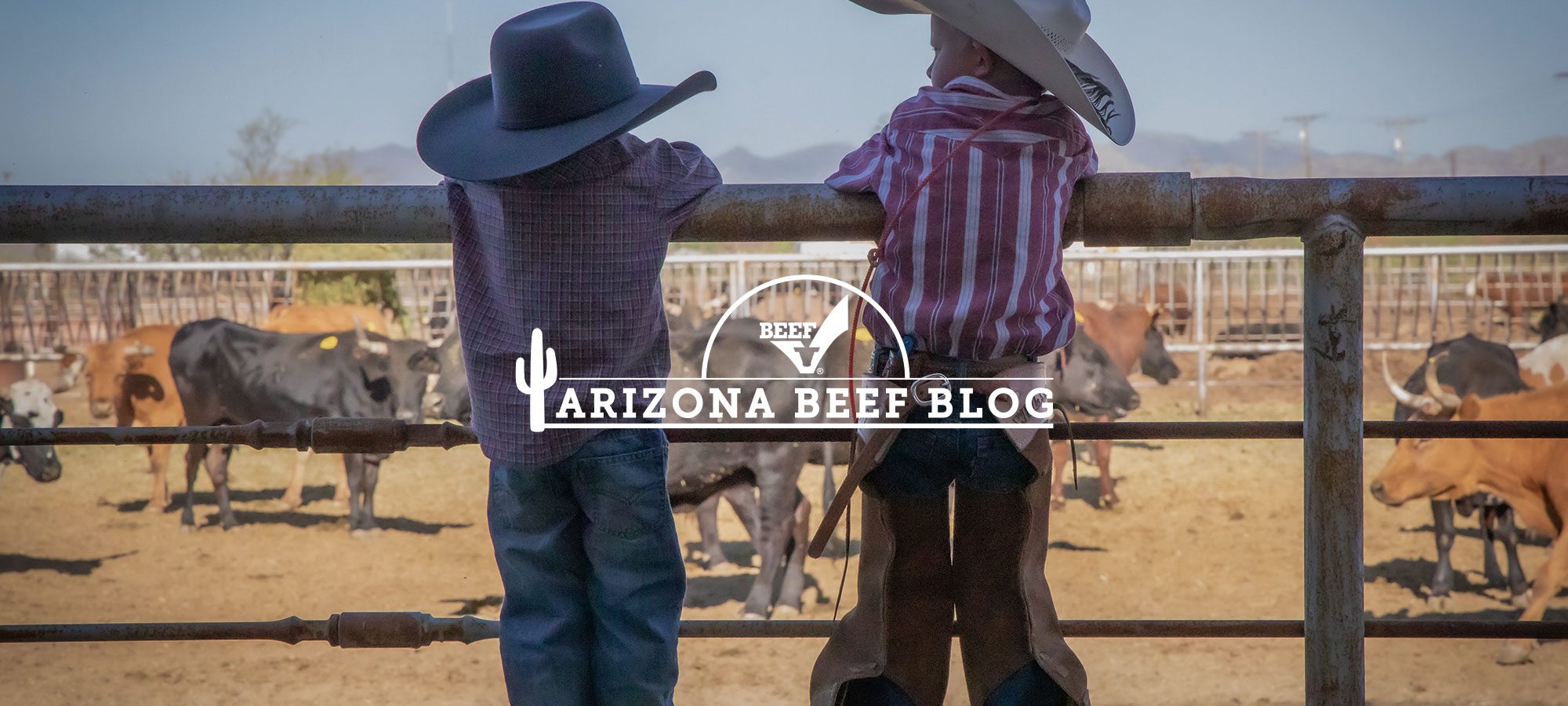
Each farm, ranch, or business involved in any segment of the beef community plays a unique role in ensuring safe, nutritious meat is readily available for both me and you to eat. The first part of the beef lifecycle begins on the ranch. Ranchers maintain a herd of cows who give birth and nurture a calf every year. The first couple months of a young calf’s life are spent gaining nourishment from the cow’s milk and grazing on pasture grass. When calves are about six months old and are big enough to fend for themselves, they are separated from the cow during what is considered “weaning time.” About a third of female heifers (a heifer is a female cow who has not yet given birth to a calf) will stay on the ranch for breeding purposes, while castrated male steers and all other heifers will be up for sale. Sometimes, they are sold to what is referred to as a “stocker or backgrounder” where they will continue to graze on pasture and put on more weight before moving to a feedlot. Some cattle are sold directly to the feed yard shortly after being weaned.
The majority of livestock are sold at auction. Today, it is not uncommon for weaned calves to be sold online. However, there are still hundreds of sale barns all over the United States that hold live auctions on a weekly basis. The Marana Stockyards, located just outside of Tucson, is an example of one such sale barn. For more information on the complete beef lifecycle, visit FactsAboutBeef.com.
The Marana Stockyards have been owned and operated by the Parsons family since 1992, and play a vital role in the Arizona cattle community. They auction off over 1,200 cattle every Wednesday afternoon. Summer is a slower season, but they expect to see as many as 2,000 cattle run through the sale barn each week this upcoming fall and spring. Now, that’s a lot of beef! This summer, I was able to sit down with Seth Nichols and Clay Buck Parsons, both of the Marana Stockyards, and get a feel for what goes into running a successful auction house.

One thing that was made very clear when talking to these two gentlemen, is that the Marana Stockyards always has their client’s best interest at heart. Both Parson and Nichols come from ranching backgrounds and understand what buyers and sellers expect. When cattle are received, they are sorted into “packages” depending on the current market demand. The packages are differentiated by a variety of factors including the number of cattle, sex, and age. The stockyard analyzes what trends are the most popular at the time in the cattle market and group animals accordingly. The end game is simple; get the most money for your cattle!

The Marana Stockyards does their part in getting ranchers the most bang for their buck but also emphasize only so much can be done once an animal makes it to the auction house. As Buck Parsons puts it, “Getting top dollar for your cattle doesn’t start at the sale barn. It starts at the ranch itself and making cattle the most marketable they can possibly be.” Simple practices, such as vaccinating and castrating, bring a significantly higher price come auction time. Even such things as producing calm, relaxed, gentle animals go a long way and could potentially increase someone’s profits. The stockyards do their part in trying to educate ranchers on what management practices are the best and what will ultimately benefit the rancher in the end.

While the majority of cattle who enter the sale barn are from Arizona ranchers, the animals next destination is varied. Stocker calves, who are smaller and need some more time to grow, may be headed off to a ranch, while larger weanlings are typically transported to Texas, Kansas, or Colorado feedlots. Older cows and bulls are purchased by buyers from packing houses.
The Marana Stockyards has been serving Arizona ranchers for close to 15 years. Just think of how many cattle have come through the barn in that amount of time! The stockyards do an outstanding job of educating their clients on growing healthy animals. They continue to help better the Arizona cattle community. Both the Parsons and Nichols families are active in Arizona cattle organizations and encourage others to get involved. They know the importance of sticking together as one united community and feel that if everyone does his or her part, then Arizona beef will continue to thrive for generations to come.
Blog post by Michelle Allen, Arizona Beef Council and Arizona Cattle Growers’ Association 2016 Summer Intern.



